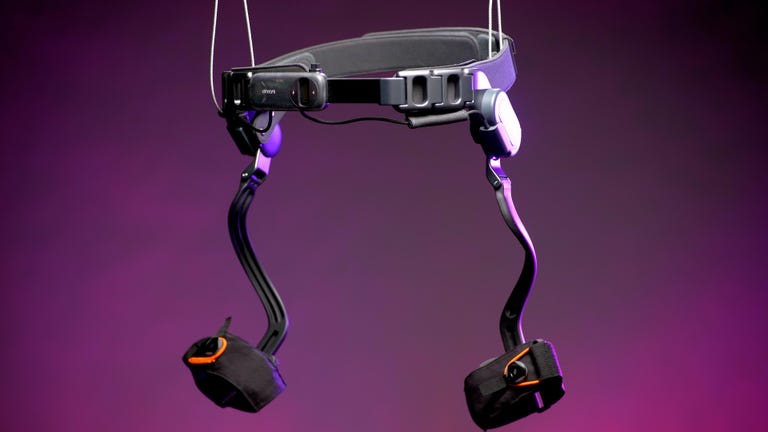Imagine if you could run faster or hike for longer, without needing to train harder? The X1 exoskeleton claims it can do just that, using AI to predict your leg movements ahead of time to give you assistance when you need it.
The X1 is designed by a Chinese company called DNSYS, which previously made exoskeletons for medical research. This is a consumer version that’s currently available on Kickstarter, starting at $600. I was able to try a prerelease version to put it to the test. It’s light, weighing 3.5 pounds (1.6 kilograms) and folds up neatly so you can carry it in a backpack. There’s also a workout mode, so you could use it for resistance training or as a rehabilitation tool.

Watch this: Trying an AI Exoskeleton in the Real World
As always, please note that CNET’s reporting on crowdfunding campaigns isn’t an endorsement of the project or its creators. Before contributing to any campaign, read the crowdfunding site’s policies — in this case, Kickstarter — to find out your rights (and refund policies, or the lack thereof) before and after a campaign ends.
In the video embedded on this page, watch how the X1 performs in my tests. I compare results with and without the exoskeleton when walking up a steep San Francisco hill and see if I can meet the company’s claim that you can run as fast as 16.7 miles per hour (27 kilometers per hour).
Strapping an exoskeleton to your legs is a peculiar experience. Will you feel powerful, like Bruce Wayne with his cybernetic knee brace in The Dark Knight Rises? Or will you feel out of control, like Wallace with his Techno Trousers?
The X1’s assistance is more subtle than you might expect. It has six user-selectable levels, but even on the maximum level, it doesn’t feel like a robot is moving your legs. You still need to put in effort when walking or running, just like you do on most e-bikes when cycling. But you don’t feel as fatigued after you’ve finished your workout, as the assistance kicks in only when you need it.
I asked DNSYS CEO Sage Dong how the AI assist works. “We train a deep learning system with tons of walking data, like joint angles and IMU sensors,” he said. The X1 predicts your movement one second ahead of time, then helps your leg move to in predicted direction which is when you’ll feel the force.
Editors’ note: CNET used an AI engine to help create several dozen stories, which are labeled accordingly. The note you’re reading is attached to articles that deal substantively with the topic of AI but are created entirely by our expert editors and writers. For more, see our AI policy.




















+ There are no comments
Add yours